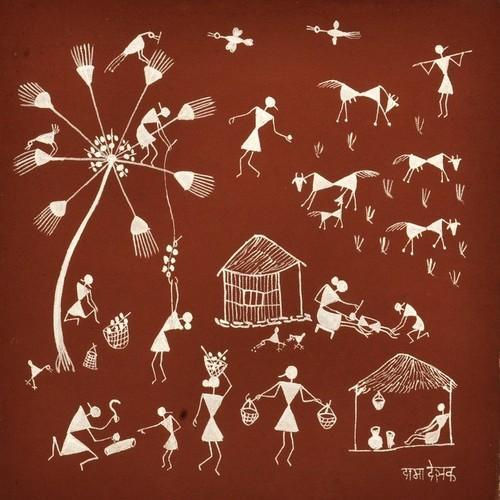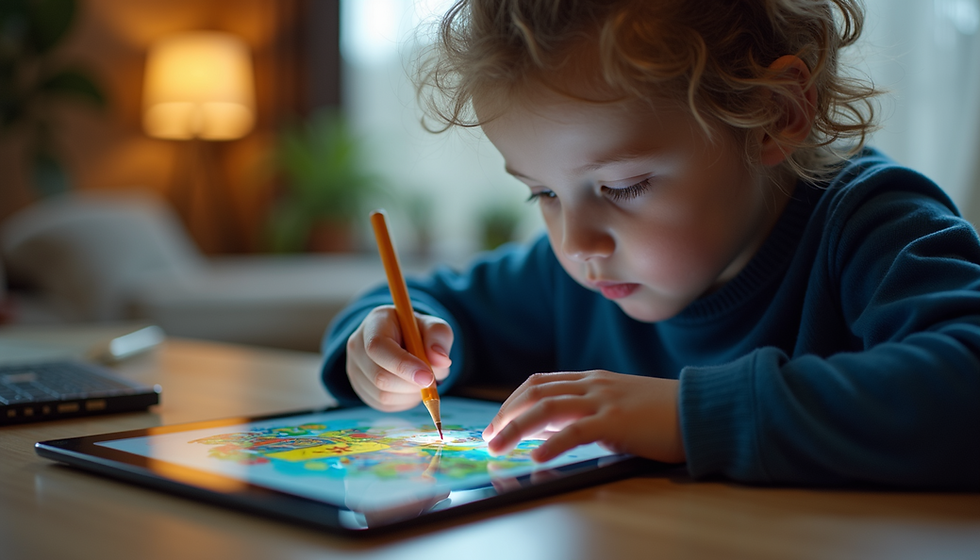Use of Technology in Modern Art
- CAMI Info
- Jan 7, 2022
- 4 min read
Updated: Sep 9, 2022
In the same way that the arts are an expression of a society's culture, this society's culture is a reflection and outcome of these arts. The interchangeable relationship between the arts - as a cultural value offered to the general public - and the general population that interacts with and embodies these values must perpetually rise upwards and never deviate - even marginally - downwards, not only in terms of heightening the esteem and taste for aesthetic beauty, but also on other levels such as revering the value of morality, virtue, hard work, science, defence of the motherland, and all other values.
As a result, the role of artists in all categories: visual arts, music and singing, drama, and poetry, must rise to become a powerfully positive element that pushes and supports this interchangeable relationship upwards rather than downwards, especially since the majority of artists are the cream of society and are revered and admired by the general public. In fact, ordinary people's adoration for artists places a larger burden on them to serve as role models, driving nations toward cultural enlightenment and enhancement.

Image: Shutterstock
Technology has become a pervasive influence in our society. It has especially influenced the way that we create and appreciate art. More artists are using Photoshop and digital cameras to create and edit pieces than ever before. Artists are also using computers to connect and gain inspiration from each other. Basically, technology helps broaden the horizons of an artist's creativity while also limit the problems that they might encounter. It makes the production of art a lot less demanding, and as a result, artists now have more time to contemplate and expand their creativity. And honestly, that is a serious win for art.
The rapid advancement of digital technology has had a significant impact on contemporary art. The artist's psyche gradually transforms into a shallow abstract translation of a constellation of enormous technological capabilities, devoid of any creative substance, as the flame of creativity dies out and the tide of inspirational revelation recedes, and the building blocks of imagination freeze at the bottom of the artist's psyche, as they gradually transform into a shallow abstract translation of a constellation of enormous technological capabilities, devoid of any creative substance. and by the incredible advancement in the introduction of new, more appealing, and more durable materials for artists to work with. Both of these inventions have broadened the creative possibilities and ushered in new artistic frontiers.
They've also helped contemporary artists to spend less time on actual artwork execution, allowing them to devote more time to contemplation, invention, and generating revolutionary ideas, as well as sound artwork preparation.
The Negative Consequences of Technology's Influence on Artists
The vast diversity of alternatives now available to artists thanks to modern technology can often be dangerously negative since they provide artists with tools of expression they never believed conceivable. When confronted with a plethora of choices, the artist may feel overwhelmed, perplexed, and perplexed, and these feelings are immediately mirrored in his work. His art could become progressively monotonous and lacking of imagination or character. As a result, the creative flame dies out, the tide of inspirational revelation recedes, and the building blocks of imagination freeze at the bottom of the artist's psyche, gradually transforming into a shallow abstract translation of a constellation of enormous technological capabilities devoid of any creative substance.
The art of painting and drawing has been most influenced by digital technology and current techniques. Painting and drawing used to be dependent on the artist's ability to use traditional instruments such as the brush, pencil, charcoal, or pastels. The artist had control over the density of colour, the degrees of distinct colours, and the realism or abstraction of his work of art by customary and measured methods. Artists nowadays, on the other hand, work with mouse clicks, video tools, and digital hues, which, while seemingly resemble, are not the same.
In terms of performance, old traditional tools are still drastically different in terms of usage and wielding techniques, as well as the ways to obtain the desired aesthetic effect from them. There is no doubt that the human touch had a significant impact on the design of the painting and the effect of the instruments in the classical school of painting, particularly when an artist used his or her human fingers to place distinctive effects and touches on his or her work.
Modern technology, on the other hand, has reduced the need for the human artistic touch in favour of a vast array of diverse and different tools, each of which is a mechanism that provides access to an even larger set of tweaking and tuning options, opening up limitless horizons for artists to express themselves more creatively and accurately, to the degree. This plethora of endless alternatives available to the artist has gotten to the point where computer-based artists unwittingly generate amazing works. As a result, the finished artwork may change significantly from the artist's original vision for the painting.
In conclusion, there is little doubt that, in the face of numerous recent technical breakthroughs that have enlarged and diversified the art world, contemporary artists are confronting increasingly complex and difficult tasks in creating distinctive artwork. Artists today face greater challenges than ever before in presenting unique and fresh ideas, and they must exert themselves and stretch their imagination in order to succeed. Furthermore, the rise in the level of tension that surrounds us has become today's most powerful force, has one of the most powerful effects, and is a fundamental reason for artists to push themselves and continue their creative pursuits without pausing.




Comments